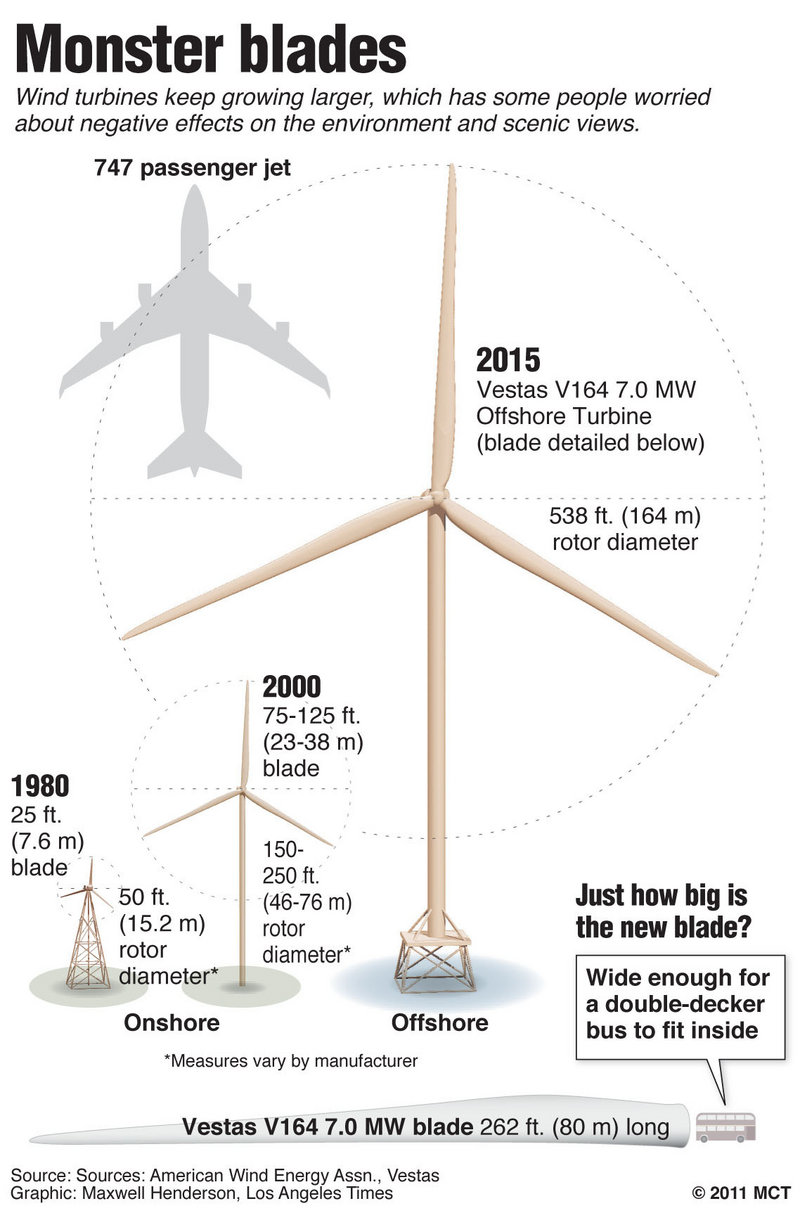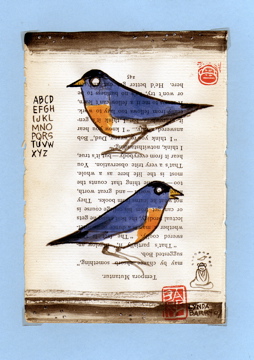7/31/11 A look at the latest trend in wind turbines (Hint: BIGGER) AND Wind Farm Strong Arm targets birds and bats

THESE WIND TURBINES filmed at 50 frames per second give us a speeded up view each turbine. Click on the image above to see how each turbine respods differently to whatever wind conditions may be present.

NEW WIND GUIDELINES ANGER BIRD AND BAT GROUPS
READ ENTIRE ARTICLE AT SOURCE: watertowndailytimes.comBy
July 30, 2022
By NANCY MADSEN
Siting guidelines: Industry too influential in drafting, critics say.
The U.S. Fish and Wildlife Service released revised wind power siting guidelines, but bird and bat advocates say they still lack the teeth to force developers to consider the long-term effects of turbines on wildlife.
Staff at the American Bird Conservancy said the guidelines lead to “‘rubber-stamping’ of wind projects.”
“Given the administration’s commitment to scientific integrity, it’s hard to understand why the peer-reviewed work of agency scientists was dismissed in favor of text written by an industry-dominated Federal Advisory Committee,” Kelly Fuller, wind campaign coordinator at the conservancy, said in a news release. “ABC would like to see the next draft include more of what the agency scientists wrote.”
The voluntary guidelines, if adopted by the government and developers, could force significant changes to projects, including those along the St. Lawrence River and Lake Ontario.
The guidelines include:
■ Three years of preconstruction bird population studies.
■ If the parties can’t agree on the adverse effects on wildlife, the service may document concerns, but the decision to proceed lies with the developer.
■ Use of operational modifications — raising the speed at which turbines start turning, not operating during key migratory times or using radar to turn off turbines when flocks pass — was suggested.
■ Further testing on other measures — such as multicolored turbines and the effects of turbine noise on birds — were suggested.
The post-construction studies lost a minimum of two years, but would be based on the level of risk with the new draft. Wind power developers approve of the revised draft guidelines, which took out some requirements to return to an advisory committee’s recommendations.
“We appreciate that the service listened to the many thoughtful public comments that were submitted and revised the document in many important ways that make it more consistent with the consensus recommendations from states, conservation organizations, and industry,” Tom Vinson, American Wind Energy Association senior director of federal regulatory affairs, said in a news release. “The industry looks forward to having workable final voluntary guidelines that will hold our industry to a higher standard for wildlife analysis and protection than any other industry in the country. We take our conservation responsibilities seriously.”
Local ornithologist Gerald A. Smith said that the guidelines attempt to reduce the cases in which a full environmental impact statement is required, but that the full studies are necessary.
“If this energy is so green and you’re painting it as a green alternative, it would seem to me that you would want to assess the costs and benefits and that you would want to minimize the cost to the greatest extent possible,” Mr. Smith said.
New York’s environmental quality review process is robust, but it is understaffed and cannot conduct the necessary oversight, he said.
“The Fish and Wildlife Service should be part of the process in more than just an advisory role and they should have some teeth,” Mr. Smith said. “The best guidelines are still inadequate because they don’t force developers to really look at things in a more holistic way and the funds are not there as they should be for the agencies to try to look at these things like cumulative impacts, which is where the service could play a very critical role if they had teeth.”
Proposed wind farms along the shore of Lake Ontario and the St. Lawrence River would have severe numbers of bird deaths, as Wolfe Island Wind Farm already has reported, he said. But with proper locations and technology, wind power could be a wise alternative energy, he said.
Critics said the industry-heavy committee had too strong a hand in the newest guidelines.
Public interest attorney Eric Glitzenstein of Meyer, Glitzenstein & Crystal, Washington, D.C., said in an email that the wind power industry views were too strongly weighted on the committee, possibly violating the Federal Advisory Committee Act, and that the Interior Department ceded decision-making power to the committee.
“Given all this, the direction in which the department is heading absolutely places it in a legally tenuous position under FACA,” Mr. Glitzenstein wrote. “More important, however, it is a direction that will inevitably be disastrous for the many birds, bats, and other wildlife that will be killed and injured by poorly sited wind power projects, since the industry will have little if any incentive to take such impacts into consideration in making siting decisions.”
Public comments on the revised guidelines will be open until Thursday by emailing windenergy@fws.gov.